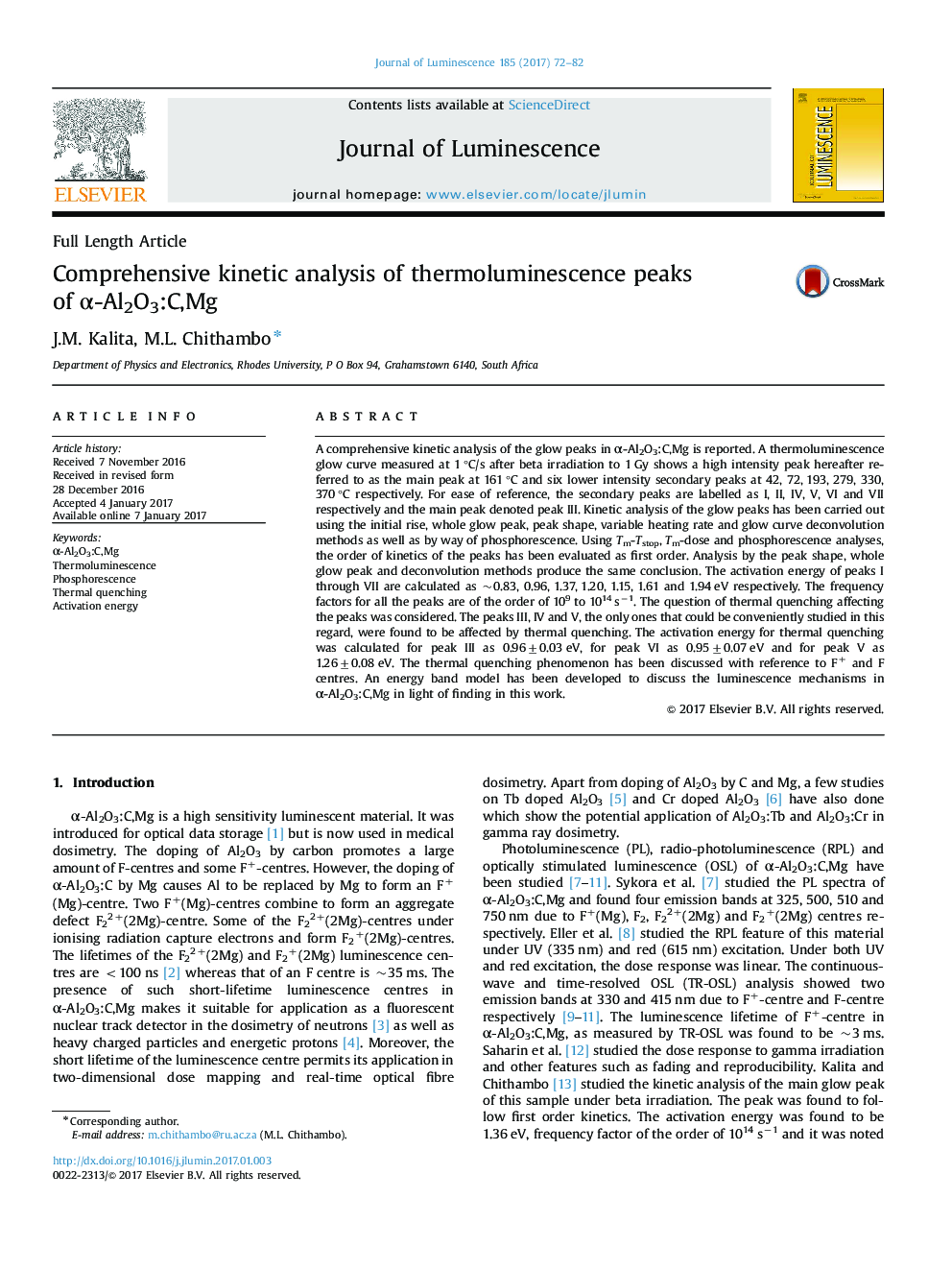| Article ID | Journal | Published Year | Pages | File Type |
|---|---|---|---|---|
| 5397606 | Journal of Luminescence | 2017 | 11 Pages |
Abstract
A comprehensive kinetic analysis of the glow peaks in α-Al2O3:C,Mg is reported. A thermoluminescence glow curve measured at 1 °C/s after beta irradiation to 1 Gy shows a high intensity peak hereafter referred to as the main peak at 161 °C and six lower intensity secondary peaks at 42, 72, 193, 279, 330, 370 °C respectively. For ease of reference, the secondary peaks are labelled as I, II, IV, V, VI and VII respectively and the main peak denoted peak III. Kinetic analysis of the glow peaks has been carried out using the initial rise, whole glow peak, peak shape, variable heating rate and glow curve deconvolution methods as well as by way of phosphorescence. Using Tm-Tstop, Tm-dose and phosphorescence analyses, the order of kinetics of the peaks has been evaluated as first order. Analysis by the peak shape, whole glow peak and deconvolution methods produce the same conclusion. The activation energy of peaks I through VII are calculated as ~0.83, 0.96, 1.37, 1.20, 1.15, 1.61 and 1.94 eV respectively. The frequency factors for all the peaks are of the order of 109 to 1014 sâ1. The question of thermal quenching affecting the peaks was considered. The peaks III, IV and V, the only ones that could be conveniently studied in this regard, were found to be affected by thermal quenching. The activation energy for thermal quenching was calculated for peak III as 0.96±0.03 eV, for peak VI as 0.95±0.07 eV and for peak V as 1.26±0.08 eV. The thermal quenching phenomenon has been discussed with reference to F+ and F centres. An energy band model has been developed to discuss the luminescence mechanisms in α-Al2O3:C,Mg in light of finding in this work.
Related Topics
Physical Sciences and Engineering
Chemistry
Physical and Theoretical Chemistry
Authors
J.M. Kalita, M.L. Chithambo,
